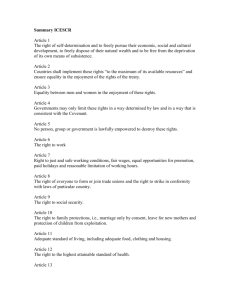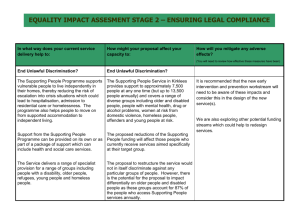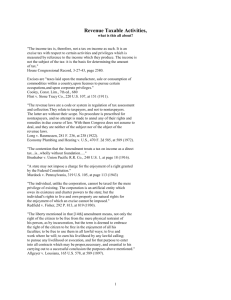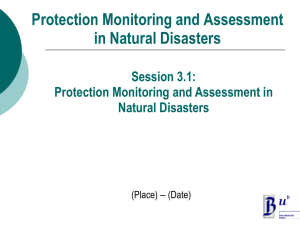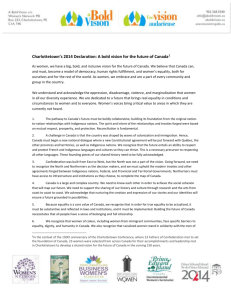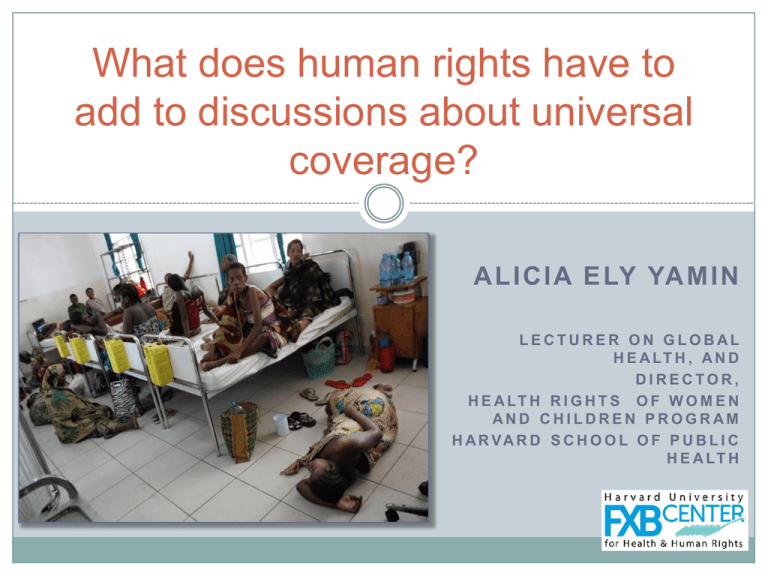
What does human rights have to
add to discussions about universal
coverage?
A L I C I A E LY YA M I N
LECTURER ON GLOBAL
H E A LT H , A N D
DIRECTOR,
H E A LT H R I G H T S O F W O M E N
AND CHILDREN PROGRAM
H A R VA R D S C H O O L O F P U B L I C
H E A LT H
Universal Coverage as a Human Rights Issue
“The vision of UHC is rapidly becoming a reality, with access
to health care no longer the privilege of a few, but the
birthright of many.”
Lancet editorial, The Struggle for Universal Health
Coverage, September 8, 2012
UN Resolution on Child’s Right to Health
(Human Rights Council, 2013)
44.
Recognizes that effective and financially sustainable implementation of
universal health coverage is based on a resilient and responsive health system
that provides comprehensive primary health-care services, with extensive
geographical coverage, including in remote and rural areas, and with a special
emphasis on access to populations most in need, and has an adequate skilled,
well-trained and motivated workforce, as well as capacities for broad public
health measures, health protection and addressing determinants of health
through policies across sectors, including promoting the health literacy of the
population;
45.
Acknowledges that universal health coverage implies that all children
have access, without discrimination, to nationally determined sets of the
needed promotive, preventive, curative and rehabilitative basic health services
and essential, safe, affordable, effective and quality medicines, while ensuring
that the use of these services does not expose the users to financial hardship,
with special emphasis on the poor, vulnerable and marginalized segments of
the population;
46.
Recognizes the responsibility of Governments to urgently and
significantly scale up efforts to accelerate the transition towards universal
access to affordable and quality health-care services.
Right to Health
“Health is a state of complete physical, mental and social
well-being and not merely the absence of disease or
infirmity.”
“The enjoyment of the highest attainable standard of health is
one of the fundamental rights of every human being without
distinction of race, religion, political belief, economic or
social condition.”
- Preamble of the Constitution of the WHO (1946)
Rights-based Approach to Health Systems
Item
Conventional Approach
Task Force (HR) Approach
Primary unit of analysis
Specific diseases or health
conditions, with focus on
individual risk factors
Health system as core social
institution
Driving rationale in structuring
the health system
Commercialization and creation
of markets, seeking financial
sustainability and efficiency
through the private sector
Inclusion and equity, through
cross-subsidization and
redistribution across the system
Patients/users
Consumers with preferences
Citizens with entitlements and
rights
Role of state
Gap-filler where market failure
occurs
Duty-bearer obligated to ensure
redistribution and social solidarity
rather than segmentation that
legitimizes exclusion and inequity
Equity strategy
Pro-poor targeting
Structural change to promote
inclusion
UN Millennium Project, Task Force on Child Health and Maternal Health, 2005
Norms under International Law
IMPLICATIONS FOR MOVING
TOWARD UNIVERSAL COVERAGE
International Covenant on Economic, Social and
Cultural Rights (1966/entered into force 1976)
Article 12(1): right to the “highest attainable standard of physical and
mental health.”
Article 12(2) sets out steps states should take toward progressive
realization:
a) The provision for the reduction of the stillbirth-rate and of infant
mortality and for the healthy development of the child;
b) The improvement of all aspects of environmental and industrial
hygiene;
c) The prevention, treatment and control of epidemic, endemic,
occupational and other diseases; and
d) The creation of conditions which would assure to all medical
service and medical attention in the event of sickness.
Protocol of San Salvador, article 10 (1999)
1. Everyone shall have the right to health, understood to mean the enjoyment
of the highest level of physical, mental and social well-being.
2. In order to ensure the exercise of the right to health, the States Parties
agree to recognize health as a public good and, particularly, to adopt the
following measures to ensure that right:
a. Primary health care, that is, essential health care made available to all
individuals and families in the community;
b. Extension of the benefits of health services to all individuals subject to the
State's jurisdiction;
c. Universal immunization against the principal infectious diseases;
d. Prevention and treatment of endemic, occupational and other diseases;
e. Education of the population on the prevention and treatment of health
problems, and
f. Satisfaction of the health needs of the highest risk groups and of those
whose poverty makes them the most vulnerable.
Some General Principles
“Progressive
Realization” in accordance with
“maximum available resources”; retrogression
presumed inconsistent (Colombia, 2004; Spain ,
2012 cases)
Interdependence with C/P rights (e.g., information,
equal protection, etc; also TCIDT proscriptions);
multi-sectoral (e.g., education; Colombia, 2008)
Constitutional
enforceability
or legislative recognition;
Principles for Moving Toward UC
AAAQ: “Health facilities, goods and services need
to available, accessible, acceptable and of
adequate quality.” (CESCR, GC 14, para 12)
Process for setting priorities: core obligation to adopt
and implement a national public health strategy and
plan of action. Process shall be evidence-based,
participatory and transparent, and include affected
groups. (CESCR, GC 14, para 43f)
Principles for Including More People
“All human beings are born free and equal in dignity and
rights” (Universal Declaration of Human Rights)
Special concern for marginalized and vulnerable groups
(e.g., prisoners, children, pregnant women, persons with
disabilities, elderly, PLWAs)
Those who lack access because of economic or physical
reasons, or any form of discrimination
Non-discrimination and Equality
“Prohibited grounds” (including: sex, race, ethnicity,
caste, HIV status, religion, national origin, disability)
Formal equality and universality
(e.g., TAC case v. Soobramoney)
Substantive equality: when effective enjoyment of
rights requires differential treatment.
(e.g. Alyne da Silva Pimentel v Brazil; disability rights)
Concluding Reflections: Context Matters
_______________
_______________
_______________
80
20
50
50
20
80
Percent (%) of population
Based on L. Tempkin, Inequality (New York: Oxford University Press,
1993), p. 297.

